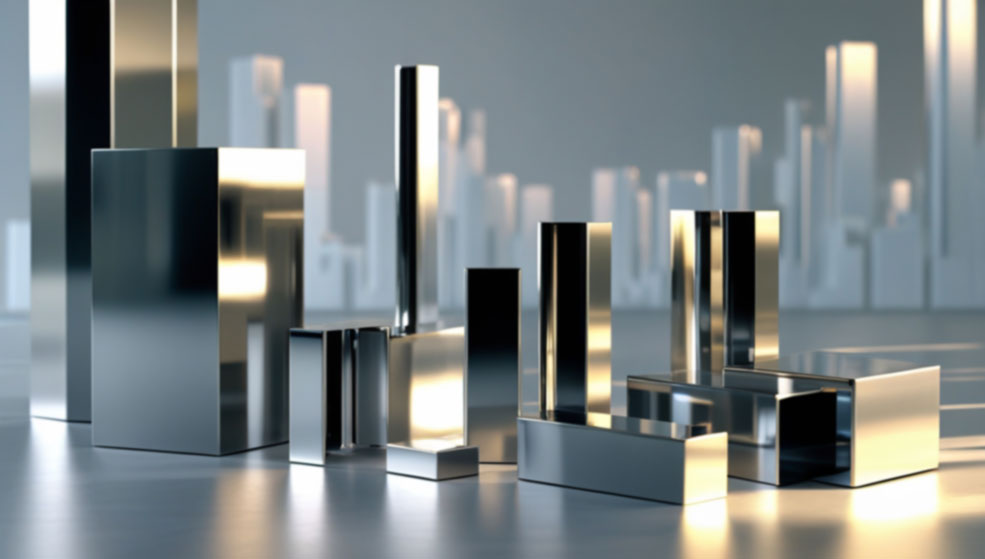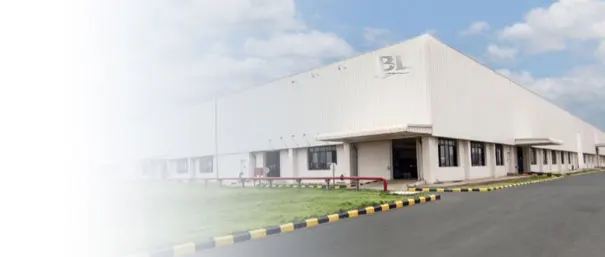In modern architecture, materials must balance durability, cost – effectiveness, and visual appeal. Polished 430 stainless steel square bars have emerged as a preferred choice for decorative applications, offering a sleek finish and robust performance in both interior and exterior settings. This article explores the technical properties, design possibilities, and real – world applications of this versatile material, demonstrating why it is reshaping contemporary architectural aesthetics.


Understanding 430 Stainless Steel: Composition and Core Properties
430 stainless steel is a ferritic alloy containing:
- 16 – 18% Chromium: Provides corrosion resistance against atmospheric moisture and mild chemicals.
- Low Carbon Content (<0.12%): Ensures ductility and weldability.
- No Nickel: Reduces material cost compared to austenitic grades like 304, while maintaining a bright metallic appearance.
Key advantages for architectural use:
- Cost – Efficiency: 20 – 30% cheaper than 304 stainless steel without compromising on corrosion resistance for non – marine environments.
- Magnetic Properties: Ferritic structure allows for magnetic mounting solutions, ideal for signage or modular installations.
- Thermal Stability: Resists discoloration at temperatures up to 600°C, making it suitable for sun – exposed facades.
The Role of Polishing in Architectural Design

Polished 430 square bars undergo multi – stage finishing processes:
- Mechanical Grinding: Removes surface imperfections using abrasives (e.g., 80 – 240 grit).
- Electropolishing: A chemical process that smooths micro – surfaces to achieve a mirror – like finish (Ra ≤ 0.4μm).
- Buffing: Final step to enhance reflectivity and reduce fingerprint visibility.
Design benefits:
- Light Reflection: Creates dynamic visual effects in lobbies, staircases, or skylights.
- Hygienic Surface: Non – porous finish meets FDA standards for food service areas.
- Anti – Graffiti Coating: Optional PVD (Physical Vapor Deposition) layers protect against vandalism.
Applications of Polished 430 Square Bars in Architecture
1. Exterior Facades
- Vertical Cladding: Interlocking polished bars create geometric patterns that adapt to sunlight, such as the Musée du Louvre Abu Dhabi’s sunflower – inspired design.
- Balconies & Railings: Square bars resist UV degradation and salt spray in coastal regions (e.g., Miami Beach condominiums).
2. Interior Design
- Statement Features: Curved or perforated polished bars form room dividers, like the parametric installations at Singapore’s CapitaSpring.
- Retail Fixtures: Used in luxury store displays due to their scratch – resistant properties and high gloss.
3. Structural Elements
- Support Columns: Polished square bars blend functionality with aesthetics in modern office buildings.
- Bridge Components: Combined with glass for transparent walkways (e.g., London’s Millennium Bridge upgrades).
4. Landscape Architecture
- Sculptural Features: Weather – resistant polished bars withstand outdoor exposure in parks and public art installations.
- Lighting Supports: Mounting brackets for LED strips in pathways or plazas.
Performance Comparison with Alternative Materials
| Material | Cost | Corrosion Resistance | Maintenance | Aesthetic Flexibility |
|---|---|---|---|---|
| 430 Stainless Steel | Low | Good (urban/rural) | Low | High (polished finishes) |
| 304 Stainless Steel | High | Excellent (marine) | Low | High |
| Aluminum | Moderate | Good | Moderate | Moderate |
| Brass | Very High | Poor (oxidizes) | High | High (patina options) |
430 stainless steel offers the best balance for budget – conscious projects requiring long – lasting visual appeal.
Design Considerations for Architects
- Finish Consistency: Specify ASTM A276 or EN 10088 standards to ensure uniform polishing across batches.
- Thermal Expansion: Account for 430’s 10.4μm/m·K coefficient in large – scale installations to prevent warping.
- Joints & Welding: Use TIG welding for seamless connections and post – weld electropolishing to maintain finish integrity.
- Color Customization: PVD coatings can add colors like bronze, gold, or black without compromising corrosion resistance.
Case Study: Polished 430 Stainless Steel in the Sydney Opera House Upgrade
To modernize the iconic Sydney Opera House, architects integrated polished 430 square bars into new pedestrian walkways and seating areas. The material’s resistance to saltwater mist and ability to reflect harbor views aligned with the project’s sustainability and aesthetic goals. Over 5,000 linear meters of custom – shaped bars were used, reducing maintenance costs by 40% compared to traditional materials.
Sustainability and Future Trends
- Recyclability: 430 stainless steel is 100% recyclable, aligning with LEED certification requirements.
- Green Finishing: Water – based electropolishing processes reduce chemical waste by 60%.
- Digital Fabrication: CNC machining allows for intricate patterns and precise bends, enabling parametric designs.
Maintenance Best Practices
- Regular Cleaning: Use mild soap and soft cloths to avoid scratches.
- Periodic Sealing: Apply silicone – based sealants every 2 – 3 years to preserve luster.
- Graffiti Removal: Use non – abrasive solvents like acetone for PVD – coated surfaces.
Conclusion
Polished 430 stainless steel square bars represent the intersection of form and function in architecture. Their combination of affordability, durability, and striking visual appeal makes them indispensable for creating spaces that inspire while enduring real – world challenges. As urban design evolves, this material will continue to play a pivotal role in shaping the skylines of tomorrow.
Key Specifications
- Standards and grades
- Dimensions and tolerances
- Surface finish
- Certificates (MTC)
Applications
Construction, machinery, energy and general fabrication — match material and finish to the operating environment.


